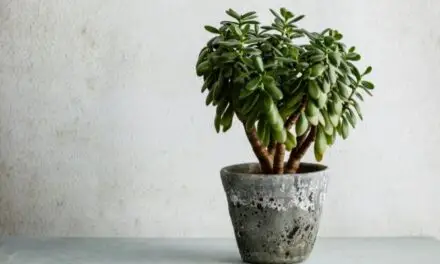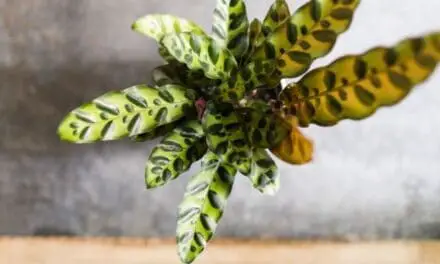Aquilegia flowers (Columbines) are immensely popular with people all over the world, and they are also popular with pollinators.
Some can grow to be a full meter in height, and there are many varieties in this family, some so different that they hardly seem like the same plant.
If you love these gorgeous cottage flowers, you might be wondering if they will bloom for you twice.
Table of Contents
Will Aquilegia Flower Twice?

Aquilegia will flower twice and continue to flower year on year, as they are a perennial plant.
They will keep going – and often keep spreading – for several years.
They self-seed readily and they will also keep flowering within a season if you remove the dead flower heads before they go to seed.
Providing The Right Growing Conditions For Your Aquilegias
If you want your Aquilegias to flower twice you’ll also have to grow them in the type of conditions they like.
These plants are fairly easy about the soil you plant them in as long it’s well-drained and not allowed to become too dry.
While they can take the direct sun in most areas, they won’t do well if it gets extremely hot, especially during the hottest summer months.
If you live in an area that gets blisteringly hot summers, you may need to mulch to prevent the soil from drying out and plant them in partial shade (but not full shade).
In winter your Aquilegias will completely die back and in spring you’ll see the first signs of their green foliage growing through the soil.
Related Article: Will A Astilbe Bloom The First Year? (And How To Keep Them Blooming)
Removing Dead Flower Heads
To encourage your Aquilegia to flower twice and keep flowering within a season, you should remove the flower heads when they are over.
This is sometimes known as deadheading and will result in the plant producing more flowers because it has not yet successfully created seeds.
Its need to create seeds prompts the formation of a new flower, and you can keep it going for long periods like this, especially if you’re prompt about removing old flower heads.
This trick can be used on many kinds of plants, but not all – so check before you cut.
If you don’t deadhead your aquilegia plants, they will stop flowering earlier, and you will not be able to enjoy the lovely blooms for as long.
While the foliage is beautiful too, with those pretty, graceful leaves, many people grow the plants to enjoy the flowers, so don’t forget to remove old flower heads.
How To Deadhead Your Aquilegias
To deadhead your Aquilegias, simply use some sharp scissors to cut off any flowers that are over (or almost over) before they have shriveled up and produced seeds.
Cut just beneath the flower, where it meets the stem.
If you find heads that have got seeds in them, you should still cut these off; the plant may keep flowering, although it is less likely to do so if it thinks these seeds have been distributed.
Discard the deadheads, and new blooms should start before too long.
If you don’t have any scissors to hand, you can sever the stem using your nails, but this may damage the stem if you aren’t careful.
How To Keep Your Aquilegia Flowering For Longer
Many Aquilegias will self-seed and thus continue indefinitely if the conditions are right for them to do so.
They are prolific in their seed production, and you might find that they spread even more than you want them to.
That means plenty of flowers, however!
You can collect the seed and scatter it to help your plants spread, or just allow it to sprinkle itself.
If you want the flowers in different parts of your garden, you will need to distribute the seeds yourself.
Sprinkle them in moist compost and water them regularly.
At times, you may need to re-plant your Aquilegias.
It can vary quite a lot, but if you want flowers year after year, you should look to re-plant every three seasons or so if your garden and your Aquilegias require it.
This ensures that the plants are young, healthy, and full of flowers.
Of course, many people find that they never need to re-plant or do anything with their Aquilegias, but make sure you think about this if you want to keep seeing flowers.
You can either buy new seeds or use the seeds you have collected from your plant – with a caveat that we will cover in the next section.
Will New Aquilegia Plants Flower In The Same Way?
You might think that if you have collected seeds from a white aquilegia, it will produce white aquilegia plants.
Not necessarily, however.
Aquilegias are highly varied, but you may find that the ones that self-seed end up reverting to the standard blue, rather than the more colorful varieties that you may have planted.
If you want your plants to keep coming up with the same flowers year after year, you will need to be prepared to re-seed them as the old plants die and the “standard” kind of aquilegia takes over the ground.
Sadly, most Aquilegias do not come up true to their flowers when they sprout from seed, so you cannot just collect the seeds and keep re-planting your flowers.
However, if you enjoy a bit of variety and you don’t mind the colors changing from time to time, let them sprout and see what kinds of flowers you get each year.
Grow Hybrid Aquilegia Plants
Hybrid Aquilegias produce much bigger flower heads that bloom for a lot longer than regular Aquilegias.
Because the hybrids don’t have to worry about setting seeds, they just continue to bloom and bloom.
Because they don’t set seed, hybrid Aquilegias also won’t spread and take over your whole garden.
Hybrids can be propagated by digging them up and dividing the clumps every couple of years in early spring.
Final Thoughts
So, the answer is that Aquilegia plants flower twice, or even more.
They will keep going for several years before they die back, and if you remove dead flower heads, they will flower for longer, so you can get many blooms from a single plant.
Keeping your Aquilegias in well-drained soil, adding the occasional boost of fertilizer, and ensuring they have a little shade will all help to produce healthy, happy plants that will offer you the best array of flowers time after time.




